Why Sensory Play is crucial to a child’s cognitive and emotional development
Sensory Play has become a pillar tool in daycare, pre-school and early elementary school classrooms. It’s also become a frequent activity in homes around the world; as common as arts & crafts for entertainment and engagement.
While many educators and parents/care-givers know that Sensory Play is based on activities that stimulate a child’s senses (sight, touch, sound, smell, taste, movement or balance), many don’t know that in addition to these crucial elements, Sensory Play is also a wonderful way to engage a child in acceptance and inclusivity.
Jean Piaget, one of the first theorists of sensory play, stated that children need environmental experiences and stimuli to guide their cognitive development. He suggested that sensory play activities strengthen a child’s brain and create neurological pathways that are crucial for any kind of learning, be it academic or emotional, contributing to a child’s ability to complete tasks and form conclusions.
For Miniland, Social Emotional Learning is at the forefront of our products and initiatives. Sensory Play is a fantastic tool to support SEL lesson plans in and out of the classroom, inside or outside.
To help incorporate Sensory Play into your classroom or home environment, we’re spotlighting 6 important ways this type of play can benefit the young children in your life:
- Sensory experiences support cognitive development:
Babies 6 months and up, especially young toddlers, gain an enormous amount of skills through Sensory Play as these activities help developing brains bridge nerve connections. This type of play forms a foundation for them to be skilled and confident enough to create connections that will improve their ability to complete more complex tasks.
- Sensory-rich play is inclusive:
With Sensory Play, there is no right or wrong way to play, making it one of the most effortlessly inclusive play activities. Children of all skill levels and ages can play together, engaging in the activity at hand. Sensory activities particularly benefit children with special needs, or who speak multiple languages. It allows children to communicate with one another and ask questions of each other, creating an activity that is both welcoming and rewarding.
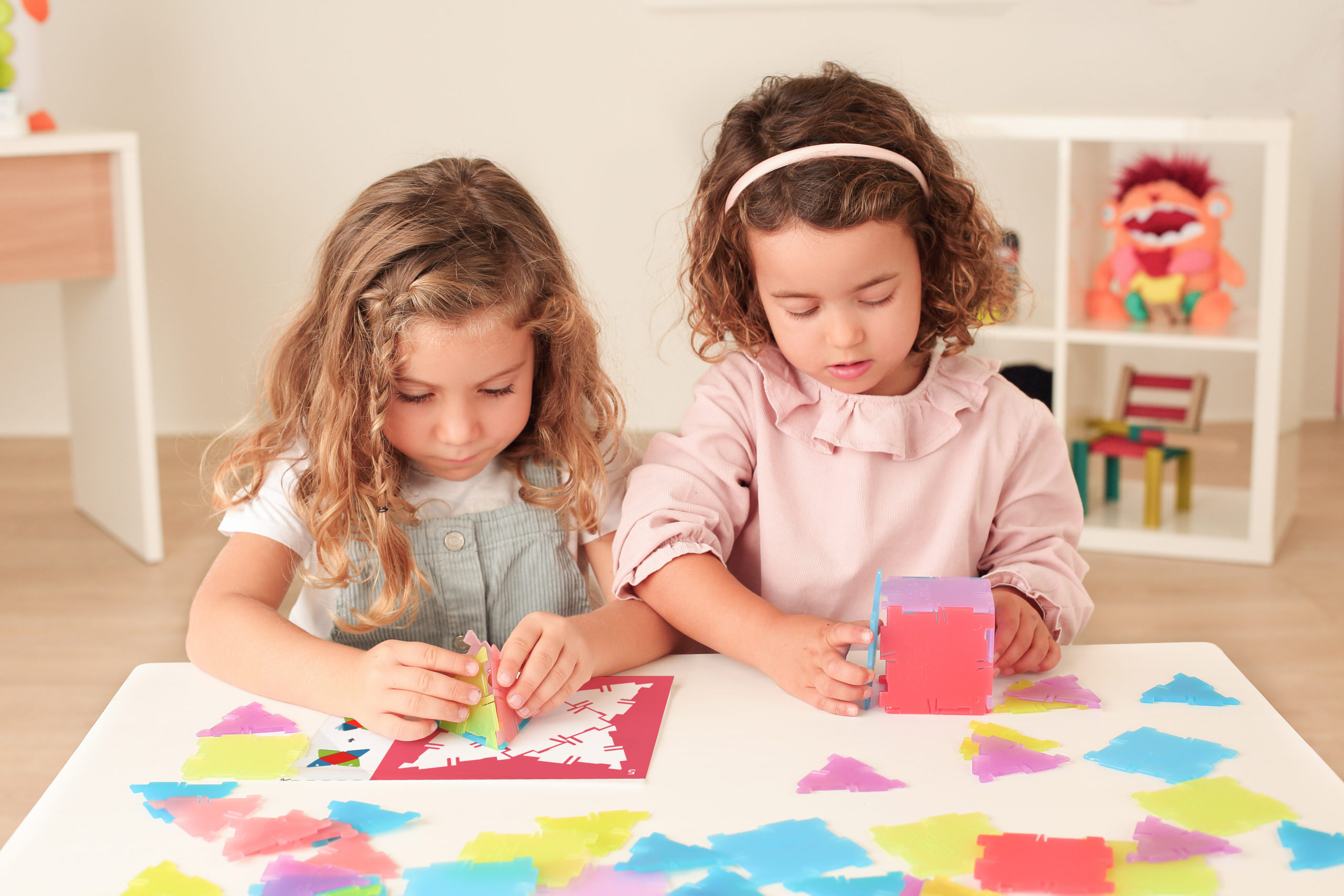
- Sensory Play focuses on SEL to regulate emotions:
Whether it’s physical activities, organizing or simple counting and building, children engaged in Sensory Play often become absorbed in their activities. Calming Activities, like counting Translucent Math Color Rings or building Conexions on a light pad are helpful for children that are overly stimulated, very active and/or can’t settle down easily. Heavy Activities like playing outdoors with sand, doing Mindful Practices like Yoga or blowing bubbles help distract upset children and promote mental fitness and self-regulation.
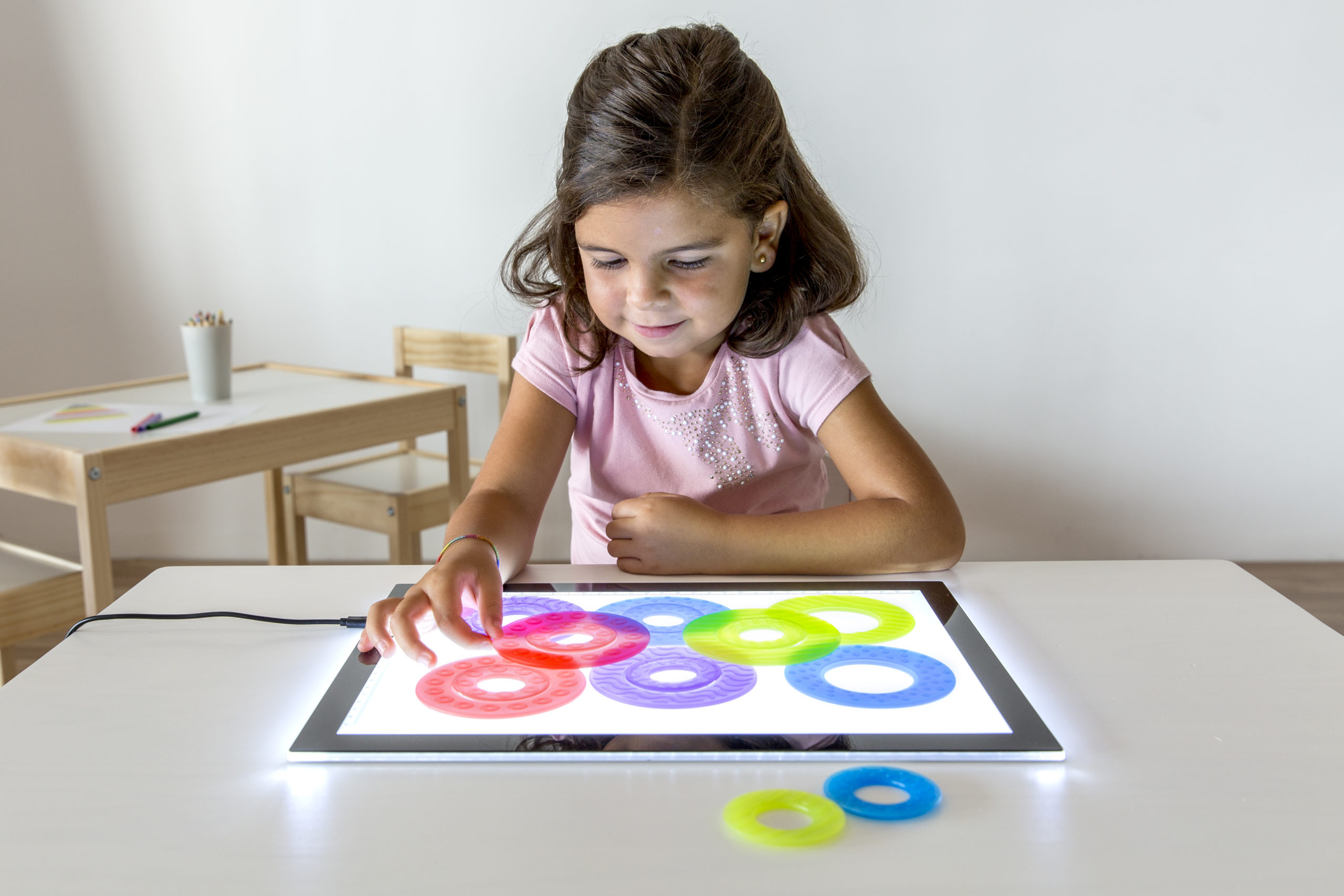
- Sensory play encourages the development of fine and gross motor skills:
Motor skills are predetermined actions that involve a child’s movement. Sensory Play particularly encourages babies and toddlers to move and participate in play, often using repetitive movements. Throwing a ball and rolling it back and forth, picking it up to determine its size and weight, feeling its textures with hands and mouth, are all ways toddlers can explore the world around them.
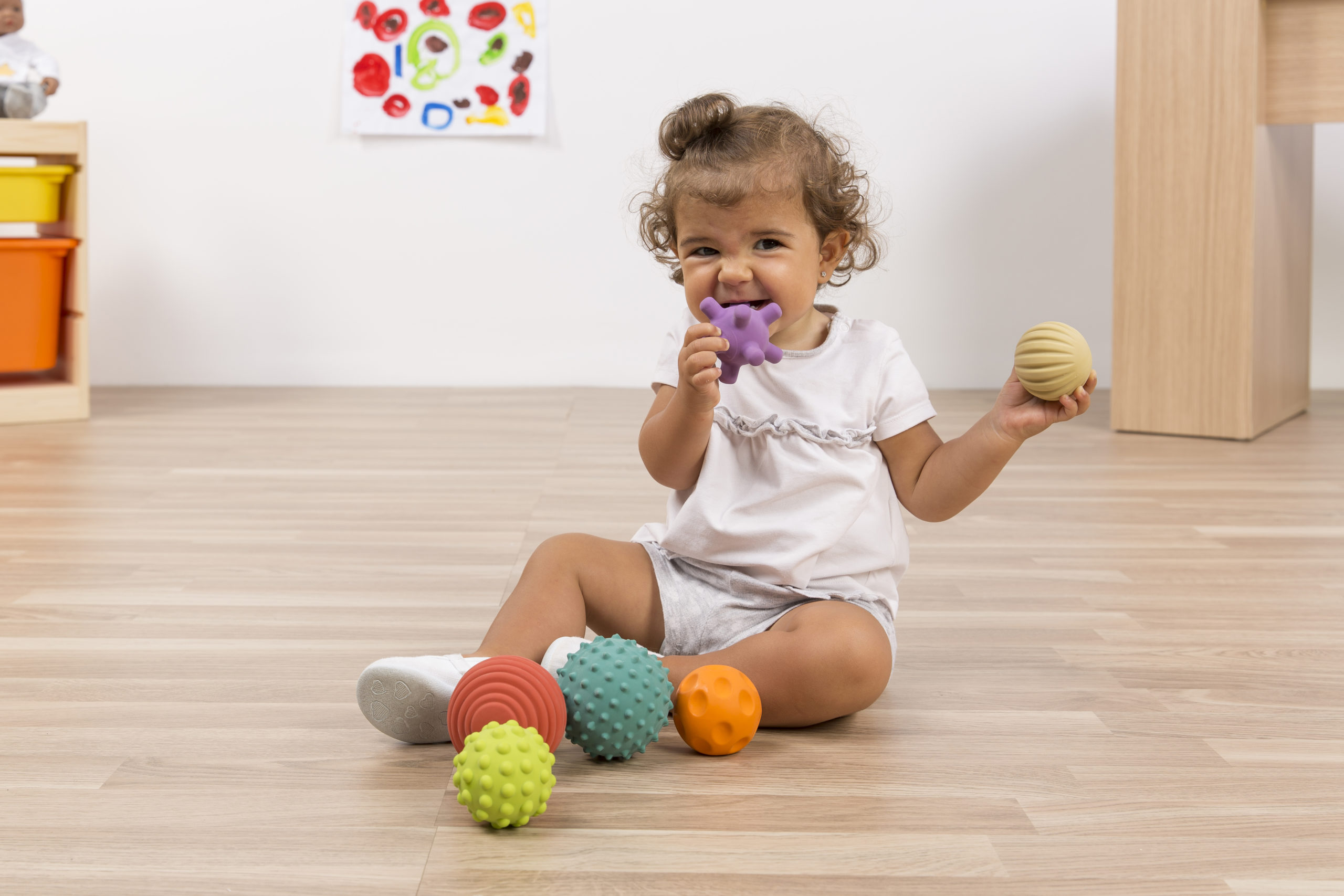
- Sensory play supports language development.
Seeing, hearing, touching, tasting and smelling are all ways children learn to think, feel and compare their environment and the objects within it. These actions motivate children to explain what they’re seeing, feeling and touching, expanding their vocabulary and confidence in communicating with their peers and with themselves.
- Sensory play can suit any environment, outdoors or inside.
Sensory Play outdoors offers an opportunity to enjoy the sounds of nature and town, all while engaging in a play activity. Whether its exercising or building a Towering Beads tower on the sidewalk, children can be free to be as loud and expressive as they like.

While playing with sensory items can most often be a self-directed activity, you can ask open-ended questions to prompt responses and form observations, such as:
- What does that feel like?
- What do you see?
- Are you hearing anything when you do that?
- How did that pose feel to you?
- What did you hear when you were sitting crisscross apple sauce during yoga?
- What do the notes feel like in your hand?
Whether you’re back in the classroom or enjoying activities at home this summer, Sensory Play is a beautiful way to promote self-discovery and encourages a child to explore new things, which in turn supports their social and emotional development.
Discover the various tools to support your Sensory Play activities this summer on our website and don’t forget to enter our June You Belong with Miniland Giveaway for your chance to win a $500 Shopping Spree to a Miniland Retailer and a Classroom Prize Pack of Sensory and Mindful products!

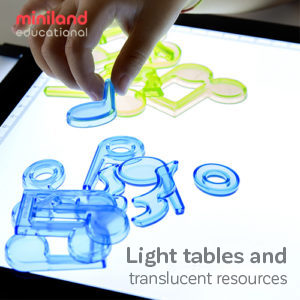
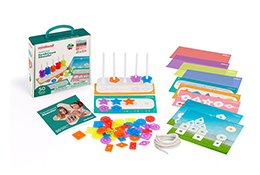
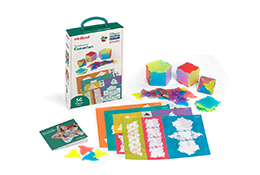
All six types of sensory play are so important. I do find that number 3 Sensory Play focuses on SEL to regulate emotions is the main focus when I’m starting a new school year in my PreK classroom.
Thank you so much for sharing!
This is wonderful Alexandra! Thank you so much for sharing it with us!
I would like to have or receive regular updates from your site.
Thank you.
Hi Pearl! On the main section of the Miniland Blog page https://usa.minilandeducational.com/school/ there’s a spot to the right that says you can sign up for Newsletters and information about the brand, just input your email address and you’re ready to go. Thank you!
My comment is: please if your able to, keep me informed of your product line.